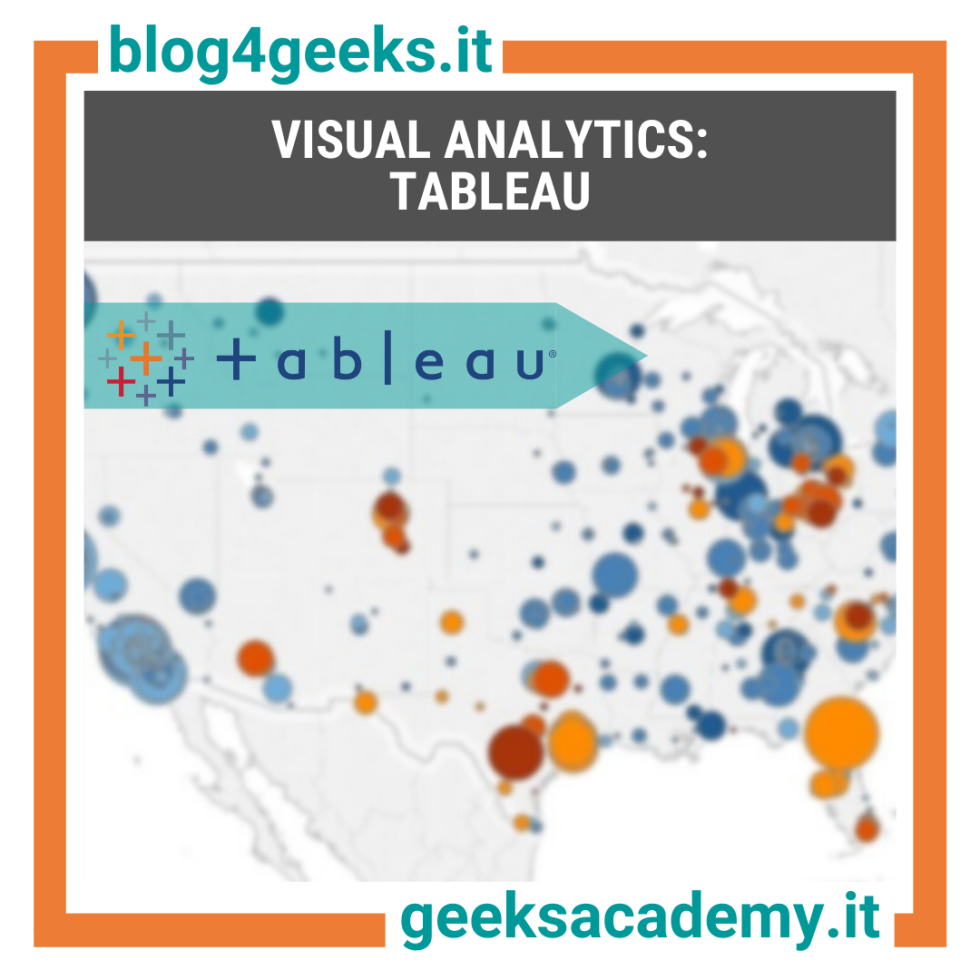
Discover Geeks Academy’s articles on: Blockchain, Coding, Cybersecurity, Cloud, Big Data, Artificial Intelligence, Gaming, Digital Innovation
For years Microsoft PowerBI (and its natural integration with Microsoft Excel) has been the most reasonable option for developing charts and graphs. Fortunately, competition has grown over time and today Tableau is usually picked over Microsoft's product. The opportunity to use the software for free, no need of business email, the ability to create an online portfolio to showcase your creations and the wide range of visualizations with an attractive design, all those elements made Tableau the king of data visualization.
Tableau's Journey
Conceived at Stanford and founded in 2003 by Chris Stolte, Pat Hanrahan and Christian Chabot, the strength of this technology lies in the ability to visually represent data through a simple and intuitive interface. The company, thanks to its success, expanded during the following years, opening several offices and acquiring Empirical Systems in 2016, a Massachusetts artificial intelligence startup. In 2019, Tableau was acquired by Salesforce, a well-known US cloud computing company, for approximately $16 billion. Currently, Tableau is the business intelligence market-leading platform, with a market share of around 13%; approximately 32,000 companies use Tableau on a daily basis. Data significantly higher than its competitor PowerBI: with a market share of 5.43%, only 13,201 companies use the software daily, just over a third of Tableau’s.
Why Tableau?
Tableau's key point lies in its intuitiveness. Even for an inexperienced or beginner user, the interface is simple. It takes very little to create a graph. Tableau is compatible with most of the common database sources: CSV, Excel, SQL and many others, the list is extensive. By opening a file, Tableau's artificial intelligence recognizes the fields in the database and self-generates additional ones to facilitate data exploration. For instance, if we process sales data from various US states, Tableau automatically creates a field with latitudes and longitudes; by selecting that field, we will view the United States map and our data will appear directly on the map. The ease of use also lies in the drag & drop function. By dragging certain fields on the x and y axis, we create a graph. It has to be noted that the graph type is suggested by the software itself. Often the graph picked by Tableau is the best option, however the user interface prompts the user to try different solutions. In no time, you are familiar with the basic commands and functions. For experienced users, Tableau allows users to create fields through mathematical functions; moreover, if we already have scripts in coding languages such as R or Python, we can integrate them directly into the software.
King of Data Visualization
Tableau has definitely some downsides compared to PowerBI. The synergy between Excel and PowerBI is unparalleled; on top of that, Excel worksheets provide options that go beyond Tableau’s user experience. This is neither good nor bad for the Salesforce platform. Tableau's mission has always been the same: to help people understand and visualize data. And that goal has largely been achieved, indeed. Tableau has won the Gartner award for best Business Intelligence platform for 9 consecutive years. More and more companies are adopting it as their main software for data analysis and visualization. In fact, there are different Tableau’s subscription services which greatly improve the use of the product within a working team environment. Tableau has all the credentials to be remembered for years to come as the undisputed leader in data visualization.
The future is Big Data
During the past years, the total amount of data created has soared, mostly due to the expansion of the Internet of Things (IoT). The data market is therefore growing dramatically and, according to the latest estimates, is going to reach a value of $103 billion by 2027. Here are some figures about the world of data:
- Businesses generate approximately 2,000,000,000,000,000,000 bytes of data per day.
- 97.2% of companies invest in AI and Big Data.
While the numbers speak for themselves, companies struggle to keep up with the ceaseless creation of new data:
- About 95% of companies report an inability to understand and manage unstructured data.
- Only about 26% of companies say they have achieved a data-driven culture.
Don't live the future as a sidekick... be a superhero! Discover Geeks Academy’s training offer in AI & Big Data: